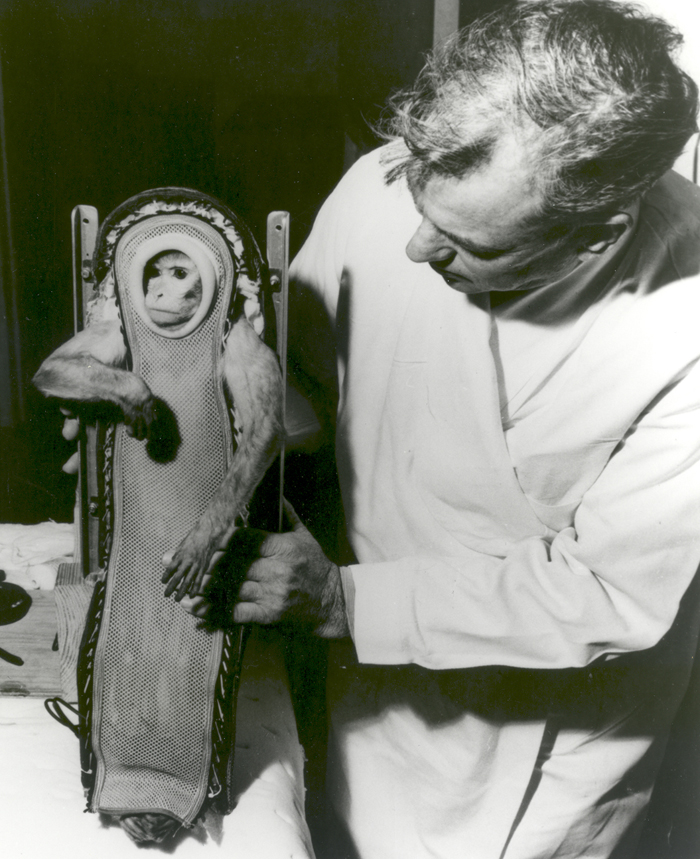Space History Photo: Sam the Monkey After His Ride in the Little Joe 2 Spacecraft

In this historical photo from the U.S. space agency, Sam, the Rhesus monkey, after his ride in the Little Joe-2 (LJ-2) spacecraft. A U.S. Navy destroyer safely recovered Sam after he experienced three minutes of weightlessness during the flight.
Animals were often used during test flights for Project Mercury to help determine the effects of spaceflight and weightlessness on humans. LJ-2 was one in a series of flights that led up to the human orbital flights of NASA's Project Mercury program.
The Little Joe rocket booster was developed as a cheaper, smaller, and more functional alternative to the Redstone rockets. Little Joe could be produced at one-fifth the cost of Redstone rockets and still have enough power to carry a capsule payload. Seven unmanned Little Joe rockets were launched from Wallops Island, Virginia from August 1959 to April 1961.
Each weekday, SPACE.com looks back at the history of spaceflight through photos (archive).
Get the Space.com Newsletter
Breaking space news, the latest updates on rocket launches, skywatching events and more!
Join our Space Forums to keep talking space on the latest missions, night sky and more! And if you have a news tip, correction or comment, let us know at: community@space.com.

The National Aeronautics and Space Administration (NASA) is the U.S. government agency in charge of the civilian space program as well as aeronautics and aerospace research. Founded in 1958, NASA is a civilian space agency aimed at exploring the universe with space telescopes, satellites, robotic spacecraft, astronauts and more. The space agency has 10 major centers based across the U.S. and launches robotic and crewed missions from the Kennedy Space Center in Cape Canaveral Florida. It's astronaut corps is based at the Johnson Space Center in Houston. To follow NASA's latest mission, follow the space agency on Twitter or any other social channel, of visit: nasa.gov.










